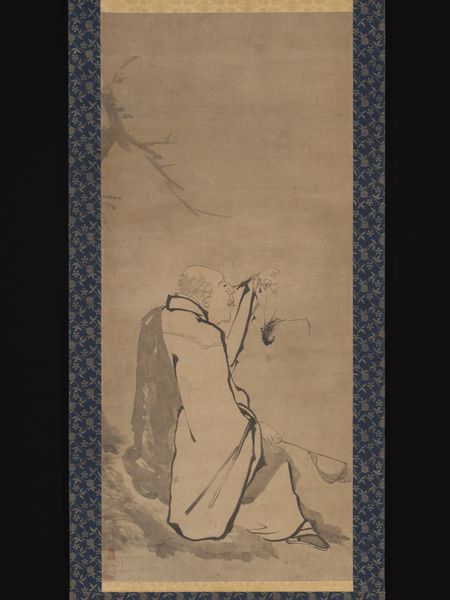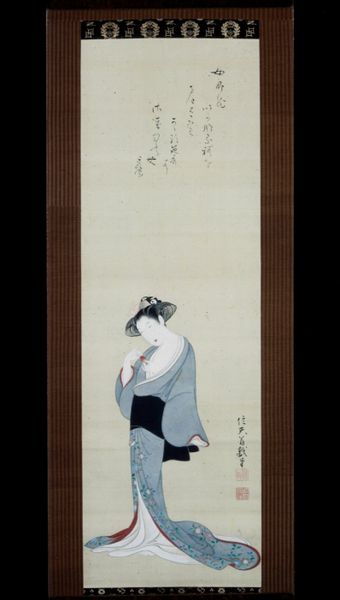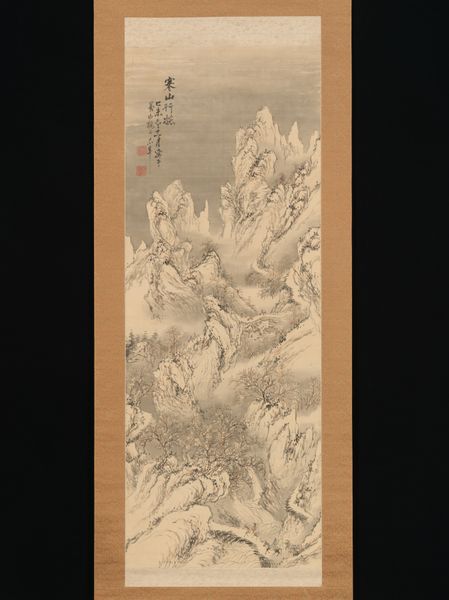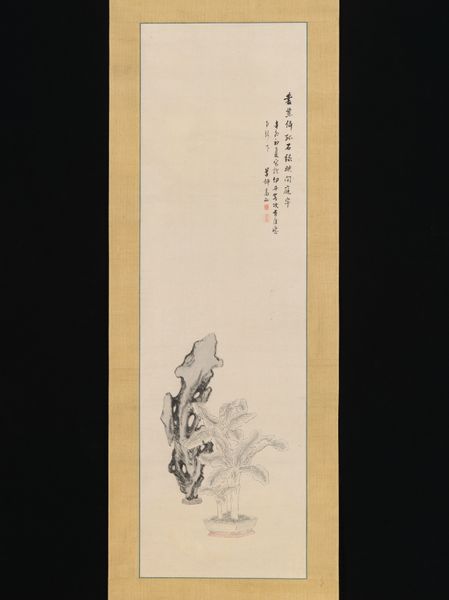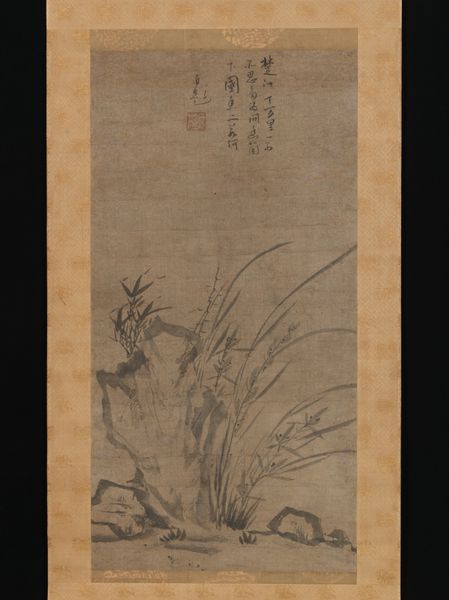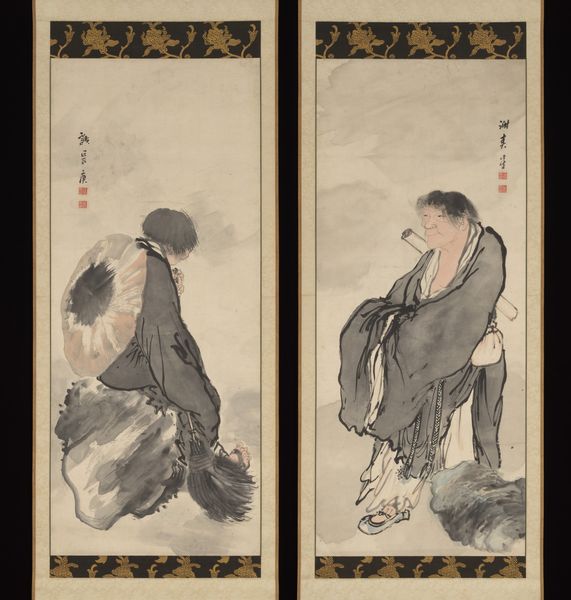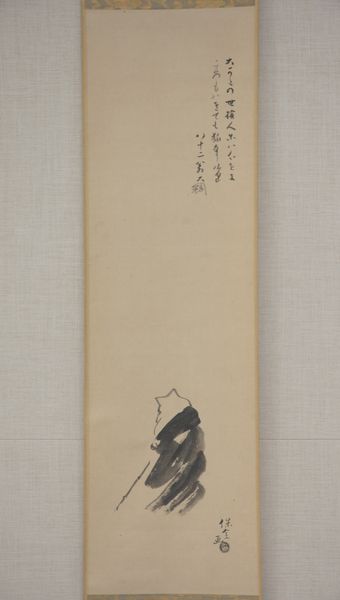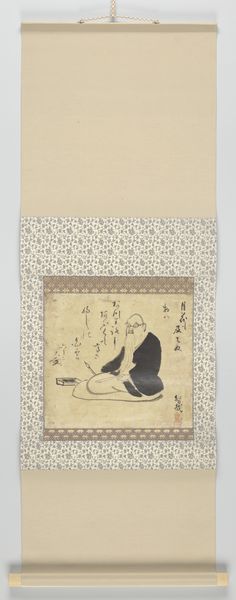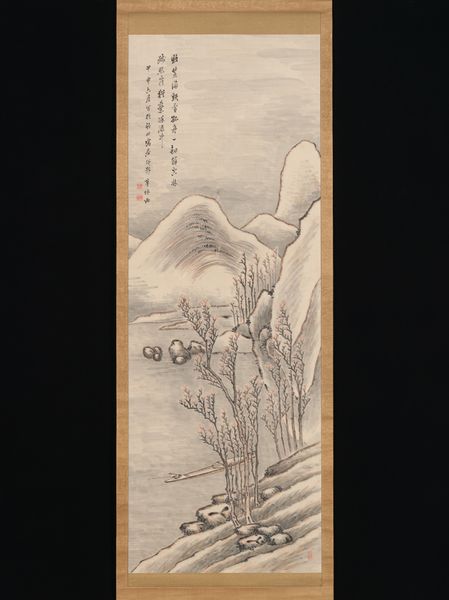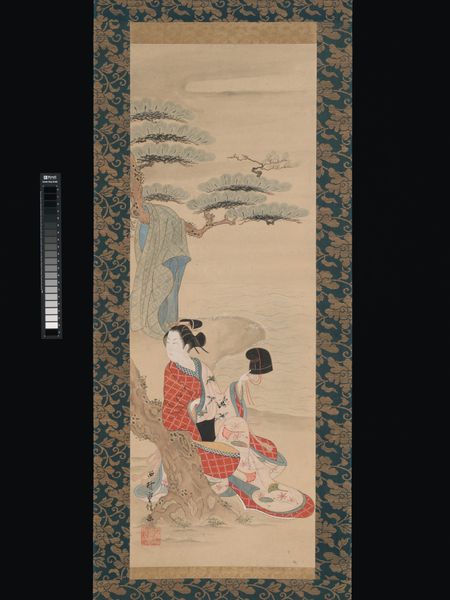
tempera, painting, paper, ink
#
beige
#
portrait
#
aged paper
#
toned paper
#
muted colour palette
#
tempera
#
painting
#
light earthy tone
#
asian-art
#
repetition of white
#
japan
#
paper
#
ink
#
brown and beige
#
earthy tone
#
neutral brown palette
#
tonal art
Dimensions: Image: 29 7/8 × 11 7/16 in. (75.9 × 29.1 cm) Overall with mounting: 60 7/16 × 15 1/2 in. (153.5 × 39.4 cm) Overall with knobs: 60 7/16 × 17 15/16 in. (153.5 × 45.6 cm)
Copyright: Public Domain
Editor: This is Maruyama Ōkyo's "Portrait of Botanka Shōhaku," made sometime between 1750 and 1795, using ink and tempera on paper. The muted tones give it such a contemplative feel. What strikes you most about this work? Curator: The symbolism resonates deeply. Note the seemingly empty space above the figures. In East Asian painting, empty space is not merely a void; it's pregnant with possibility. It invites meditation and signifies the boundlessness of the Tao. The positioning of Botanka Shōhaku, holding what appears to be a gong or musical instrument, and seemingly gazing towards this open space, speaks to the aspiration for enlightenment, transcending the mundane. Does the subject's gaze evoke in you the yearning for something beyond immediate comprehension? Editor: It does, now that you point it out. I was so focused on the figures, I missed the importance of the empty space. What about the musical instrument? What does that signify? Curator: Music, traditionally, bridges the earthly and spiritual realms. Its sound vibrates through the universe, echoing the creative pulse of existence. To contemplate its significance, consider its absence here: it isn't being played, it’s being held, which suggests a pause, a moment of reflection before action or expression. Does that change your understanding of the symbolism? Editor: Absolutely. The stillness gives the painting a sense of quiet power. Thank you, I’ve definitely learned a new way to "read" this type of painting! Curator: Indeed! By understanding the traditional symbolism and the considered composition, the artwork unfolds into something far richer than a mere representation of form. It's an echo of shared cultural understanding.
Comments
No comments
Be the first to comment and join the conversation on the ultimate creative platform.
